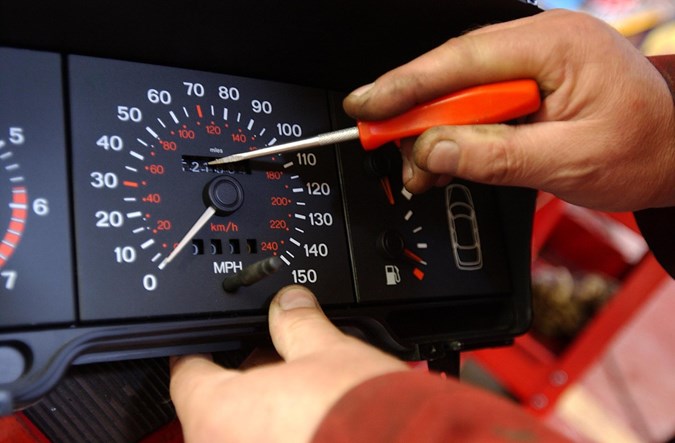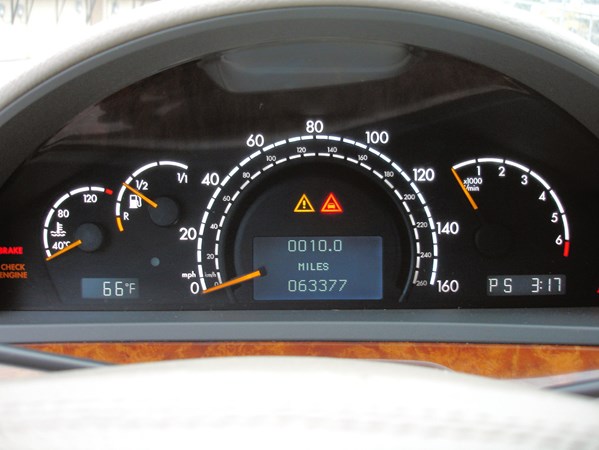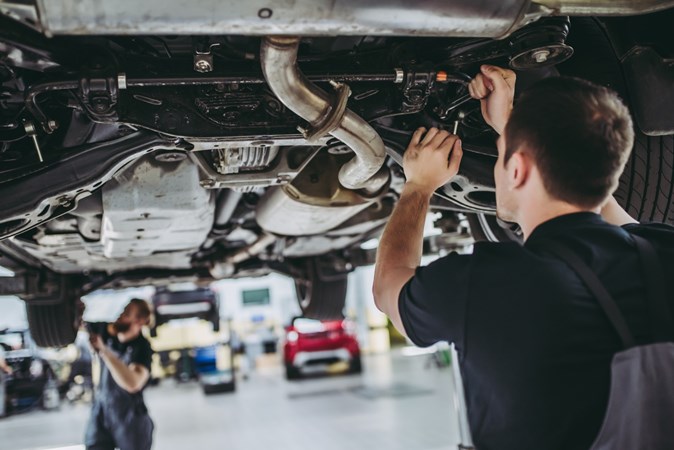There are lots of things to look out for when buying a used car and among the most important is ‘clocking.’ A clocked car has had its dashboard mileage readout intentionally rolled back in an attempt to increase the car’s value or escape excess mileage charges.
Here, we’re going to explain everything you need to know about clocked cars including exactly what they are, how you can spot one and avoid buying one, and what to do if you find you’ve inadvertently bought one.
What is a clocked car?
In simple terms, a clocked car is one on which the mileage display on the odometer has been intentionally altered to show a lower figure. It’s primarily done to increase a car’s used value, but it can also be done to cover up unauthorised usage of a car or avoid the excess mileage charges on a lease or personal contract purchase.

There are some legitimate reasons for discrepancies between a car’s odometer reading and its true mileage. For instance, the instrument display may have been replaced, or the odometer may have stopped working. But an honest seller will highlight that. Clocking is a fundamentally dishonest practice.
Can I sell a car that has been clocked?
Selling a clocked car is considered a type of fraud and is therefore illegal in the UK. The fact that so-called mileage correction services openly advertise might lead you to think otherwise. Indeed, there can be reasons to alter a car’s odometer if, for instance, it stopped working. But the readout would have to increase, not decrease.
If you find you’ve bought a clocked car and want to get rid of it, the best thing to do is keep an account of the mileage covered during your ownership. If you can find out what the car’s true mileage is, you should declare that figure and be honest about the discrepancy on the odometer.
If not, you should only declare the mileage you’ve covered and be honest about the true mileage being unknown. Either way, the car will be worth a lot less than it would be with an accurate odometer reading.

How do I know if my car odometer is tampered?
You should always have your detective hat on when looking at a used car you’re thinking about buying. There are all sorts of clues that a car isn’t what its seller claims it to be and there are clues that the odometer has been tampered with.
The clues are easiest to spot on a car with an analogue odometer. The individual digits have to be repositioned, which means the whole instrument cluster has to come out. Look to see if the cluster is sitting in its place properly and if there are any damaged screws or clips. Prod it to find out if it’s loose and make sure the odometer’s digits line up correctly.
It’s more difficult to tell if a digital odometer has been altered because it’s all done by computer. Some cars, such as recent BMWs, show an anti-tampering dot on the odometer when a discrepancy between it and the car’s electronic control unit is detected. But even that isn’t foolproof.

If you feel like the displayed mileage isn’t right, there’s more detective work to be done, which you can read about below. Or you can just walk away from the car. Remember, you’re never under any obligation to go through with a deal if it doesn’t add up.
How do I know if my car mileage is real?
There are a number of things you can do to verify a car’s mileage, or at least raise questions about it, and we’ve listed them below in no particular order. Determined fraudsters cover their tracks well, but a keen eye for detail can catch them out.
Get a car history check
Getting a car history check from a service such as CAP HPI or Car Vertical will show you official records for the car which can be used to verify its mileage. They also highlight whether there’s any outstanding finance on the car, and if its been damaged or stolen. Some services offer insurance to compensate you if it’s later discovered the car has been clocked.
Check the car’s MOT history
The MOT history of every car since 2007 is available online through the Government’s MOT check service. Go through the history of any car you’re thinking about buying to check for discrepancies in the mileage between each test. If you spot that the mileage has decreased significantly, or stopped increasing, quiz the seller to find out why. Every car should be sold with at least some MOT certificates, so also check the mileage on those – especially ones issued before 2007.
Look at the car’s service history
Every car should be sold with some service history that shows it has been properly maintained and generally cared for. Check the mileage recorded at each service to make sure it tallies with the odometer reading and the MOT history. However, paper service history can be easily falsified, so you might want to ring the garages that carried out work to find out if their records match.
Many cars now have digital service records, which are stored on the manufacturer’s computer system. They are very hard to falsify, but it can still be done. Again, if anything doesn’t feel right, ring the garages listed on the history to find out if their records match.

Check the car’s diagnostics
The odometer isn’t the only thing that records a car’s mileage – there can also be several electronic control units (ECUs) that record it. If the person altering a car’s odometer is a bit sloppy, they may neglect to also change the mileage on the ECUs. A garage that has the appropriate diagnostics equipment should be able to interrogate the ECUs to make sure the mileage tallies.
Inspect the car’s condition
Modern cars are generally very well made, so it can be tricky to judge mileage from a car’s general condition alone. However, there are clues that the car has covered more miles than the odometer suggests.
The key things to look out for are a worn steering wheel, pedals, switches, gearlever and seats. Excessive tyre wear can also be a strong clue, as can heavily scratched door handles and touched-in stone chips. A car’s engine bay is often where its mileage is most obvious. If it’s dirtier than you’d expect for the mileage, something could be amiss.
Have a thorough test drive
You can tell a lot about how many miles a car has done from what it’s like to drive. If you can, drive several examples of the car you’re interested in and pay attention to how it feels. An example with high miles will feel more tired, loose and less responsive. Also listen out for any clunks, rattles or groans. If the way a car feels doesn’t tally with mileage, it’s likely to have been clocked.
Ask questions and walk away
Don’t be afraid to ask as many questions about the car as possible, especially if something doesn’t add up. If the seller can’t provide satisfactory answers, walk away. If you’re buying from a dealer, make sure there isn’t a disclaimer in the paperwork stating that the car’s displayed mileage shouldn’t be relied on.

What can go wrong with a clocked car?
There are a number of car components that have a limited life and need replacing periodically, potentially at a four-figure cost. We’re talking about things such as the cambelt, clutch and dual-mass flywheel assembly, diesel particulate filter, maybe even the turbocharger.
Such components generally last around 75,000 to 125,000 miles and it’s often the case that cars are clocked to cover up the fact that those components are due for replacement. On top of that, a clocked car will suffer the normal wear of a car with high mileage. So watch out for any components that appear to be wearing out prematurely.
Can I do anything about a clocked car?
If you suspect your car – or one you’re thinking about buying – has been clocked, you should report it to Action Fraud and the Motor Ombudsman. Give them as much information as you can about the car and the seller. With any luck, the seller will be prosecuted and you’ll get your money back, but there’s no guarantee of that happening.
















